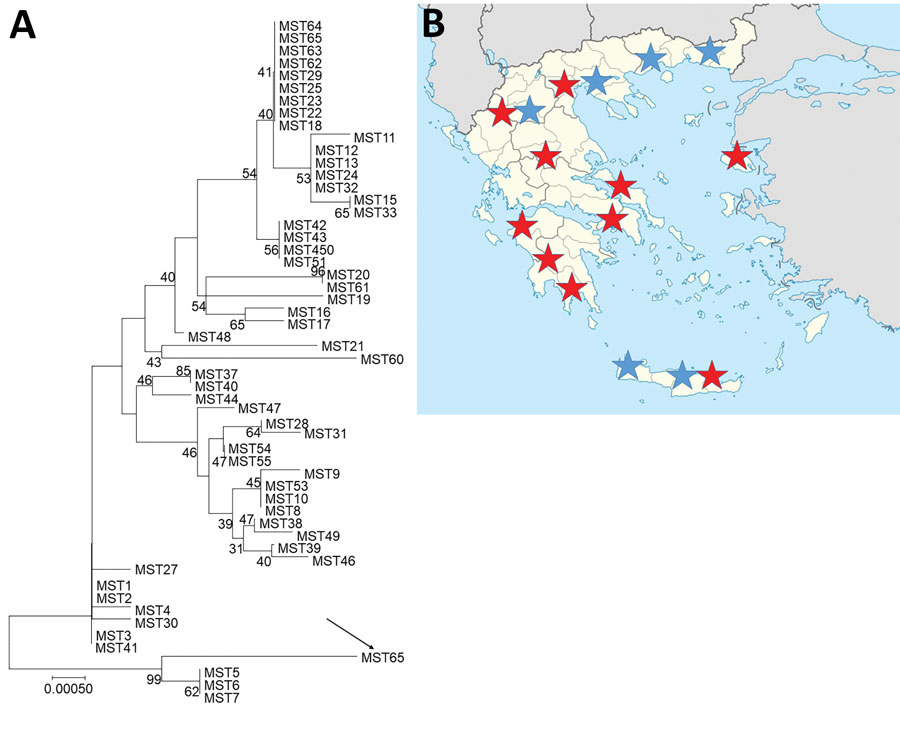Volume 26, Number 10—October 2020
Research Letter
Q Fever Endocarditis and a New Genotype of Coxiella burnetii, Greece
Figure

Figure. Investigation of Q fever endocarditis, Greece. A) Neighbor-joining tree of Coxiella burnetii genotypes determined by multispacer sequence typing. Analysis was performed by using MEGA version 7 software (https://www.megasoftware.net) and the neighbor-joining method (maximum composite likelihood method) with 1,000 replicates. Numbers along branches are bootstrap values. Arrow indicates new genotype from Greece. Scale bar indicates nucleotide substitutions per site. B) Seroepidemiologic evidence of C. burnetii cases in Greece. Blue stars indicate previous studies, and red stars indicate this study. MST, mutispacer type.
Page created: June 16, 2020
Page updated: September 17, 2020
Page reviewed: September 17, 2020
The conclusions, findings, and opinions expressed by authors contributing to this journal do not necessarily reflect the official position of the U.S. Department of Health and Human Services, the Public Health Service, the Centers for Disease Control and Prevention, or the authors' affiliated institutions. Use of trade names is for identification only and does not imply endorsement by any of the groups named above.